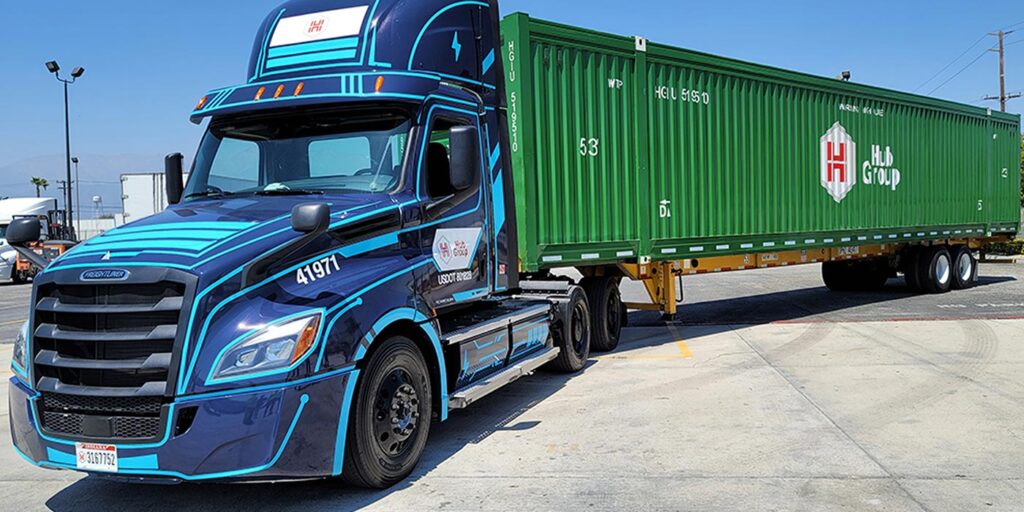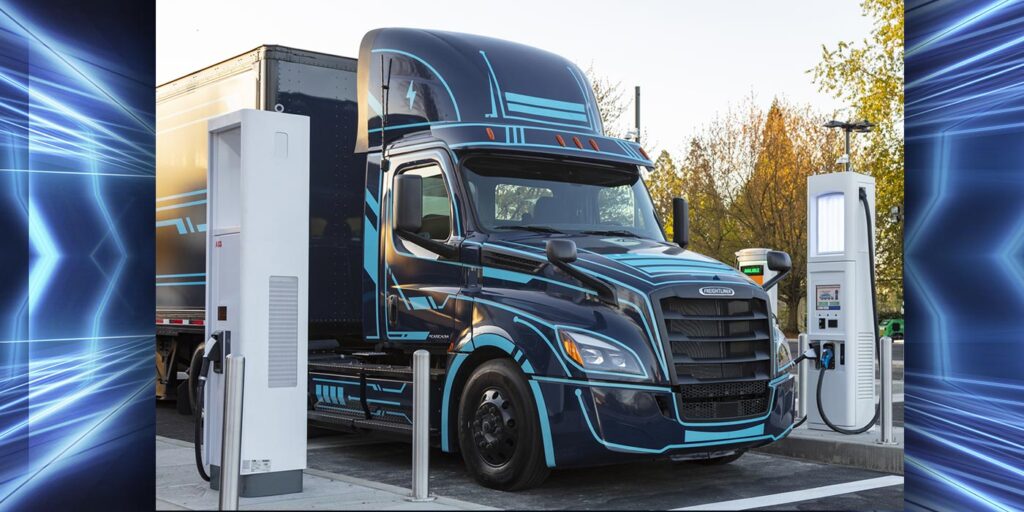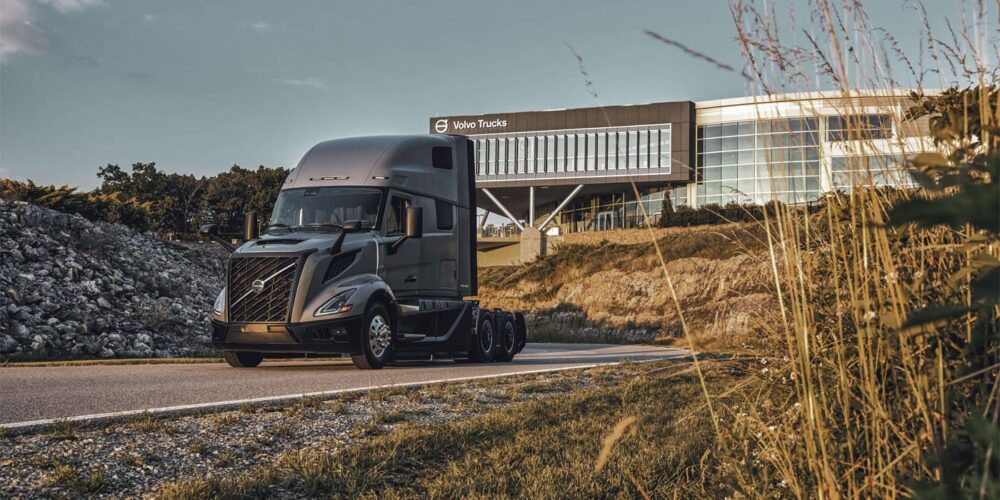This was the quote that caught my attention: “One lesson stands out in particular: the importance of regenerative braking to maximize range. Across the pilots, the average recuperation ratio was 20%-25% with some drivers achieving even up to 30%.”
“Recuperation ratio” is a new term added into the electric truck conversation, and I’d expect nothing less from the always interesting and animated Andreas Juretzka, head of electric mobility product development at Daimler Trucks North America (DTNA). The Juretzka quote was featured in a Freightliner press release that touted Freightliner battery electric Innovation and Customer Experience (CX) Fleets have reached one million miles of real-world usage, with fleets operating across the West Coast and Canada.
We’re talking about the likes of Penske Truck Leasing, NFI, Hub Group, Knight-Swift, Schneider, XPO, Ryder, J.B. Hunt, and UPS, along with specialized fleets such as Loblaw Companies Limited, Sysco, Southern California Edison, Fastenal, Temco Logistics, Bison Transport, Core-Mark, Costco Wholesalers, Iron Mountain Inc., KeHe Distributors, Mondelez International Inc., US Foods and Velocity Truck Rental & Leasing. The who’s who of early adopting fleets fielded more than 40 battery electric Freightliner eCascadias and eM2s.

With 1 million collective miles in the rearview mirror, I needed to know more about “recuperation ratio” and the other lessons that the Freightliner team has learned about electric truck operation. Here’s what Juretzka had to say.
Fleet Equipment (FE): What is ‘recuperation ratio’? And how does that translate to range miles?
Juretzka: Recuperation is the most exciting function of an electric powertrain. It’s when the motor acts like an alternator and regains energy back into the battery. Recuperation ratio is the percentage of energy recuperated during a trip by the use of regenerative braking.
For example, if a trip utilizes 100 kWh of energy to propel the vehicle, while regenerative braking puts 20 kWh back into the HV battery over the course of that trip, then the driver has achieved a recuperation ratio of 20%. During our customer pilot program, drivers increased their recuperation as they gained more experience with the use of regenerative braking – reaching a recuperation ratio of 20% to 25% on average, with some drivers even achieving more than 30%. The use of recuperation is essential to maximizing driving range per charge and minimizing energy cost per mile.
FE: What did fleets see in testing that let them overcome range anxiety? What level of range anxiety exists now?
Juretzka: Range anxiety comes from the fear of having no other option than a tow situation. Some drivers were nervous about range when they first began to run their existing routes in the new electric trucks, but gaining experience with regenerative braking alleviated some worry, especially in situations where steep grades consumed extra energy but also provided the best opportunity for recuperation.
We also worked with fleets to determine routes that were a good fit for the these vehicles – dedicated, repeatable routes with a round-trip distance of under 150 miles, so that the vehicle’s extra range potential would be sufficient to account for any surprises (i.e. construction detours, extreme weather, heavy congestion).
FE: After 1 million miles, what have been the biggest service needs on the trucks?
Juretzka: In general, the electric powertrain system is operating in low temperature profiles. That has a positive impact on the cooling and lubrication systems. For that reason, service intervals and maintenance needs are relatively low.
The program focus was mainly on how the vehicles were impacted by external factors: weather, temperature, driver behavior and varying use cases. During this phase, the team assessed long-term vehicle wear, battery degradation and charging equipment behavior.
FE: How has the charging infrastructure stood up to the task over the mileage? What charging lessons have you gleaned from testing?
Juretzka: Interoperability between the vehicles and the charging equipment has been a key focus of this pilot program. The Innovation and CX Fleet experience has allowed the product design team to test the eCascadia and eM2 platforms on various commercially-available CCS1 DC fast-charging systems, enabling the team to prepare the series-production trucks to be as reliable and brand-agnostic as possible by the time they are delivered to customers.
The data collected by these pilot fleets has also contributed to the development of the Detroit eFill line of charging products, which will further ensure that customers’ deployments will be supported by reliable, durable charging infrastructure that is purpose-built for commercial truck applications.
FE: How have you seen drivers react to the truck? What’s the level of skepticism or driver pushback on new electric truck technology?
Juretzka: Driver response to operating the vehicles has been overwhelmingly positive. As with the integration of any new technology, there is occasionally some push-back in the beginning and some drivers were concerned about how the logistics of charging would impact their daily routines. Once fleet managers established new routines and drivers gained confidence behind the wheel of these trucks, though, skepticism and resistance was largely abated, and driver feedback became focused on the vehicles’ benefits: enhanced driving performance from smooth acceleration and instant torque; reduced fatigue from the lack of noise, fumes and vibration; and in many cases, a sense of pride in pioneering a new technology with positive social and environmental impact. In many cases, drivers mentioned that ‘Once you’ve driven an electric truck, there is no way of going back.’”















